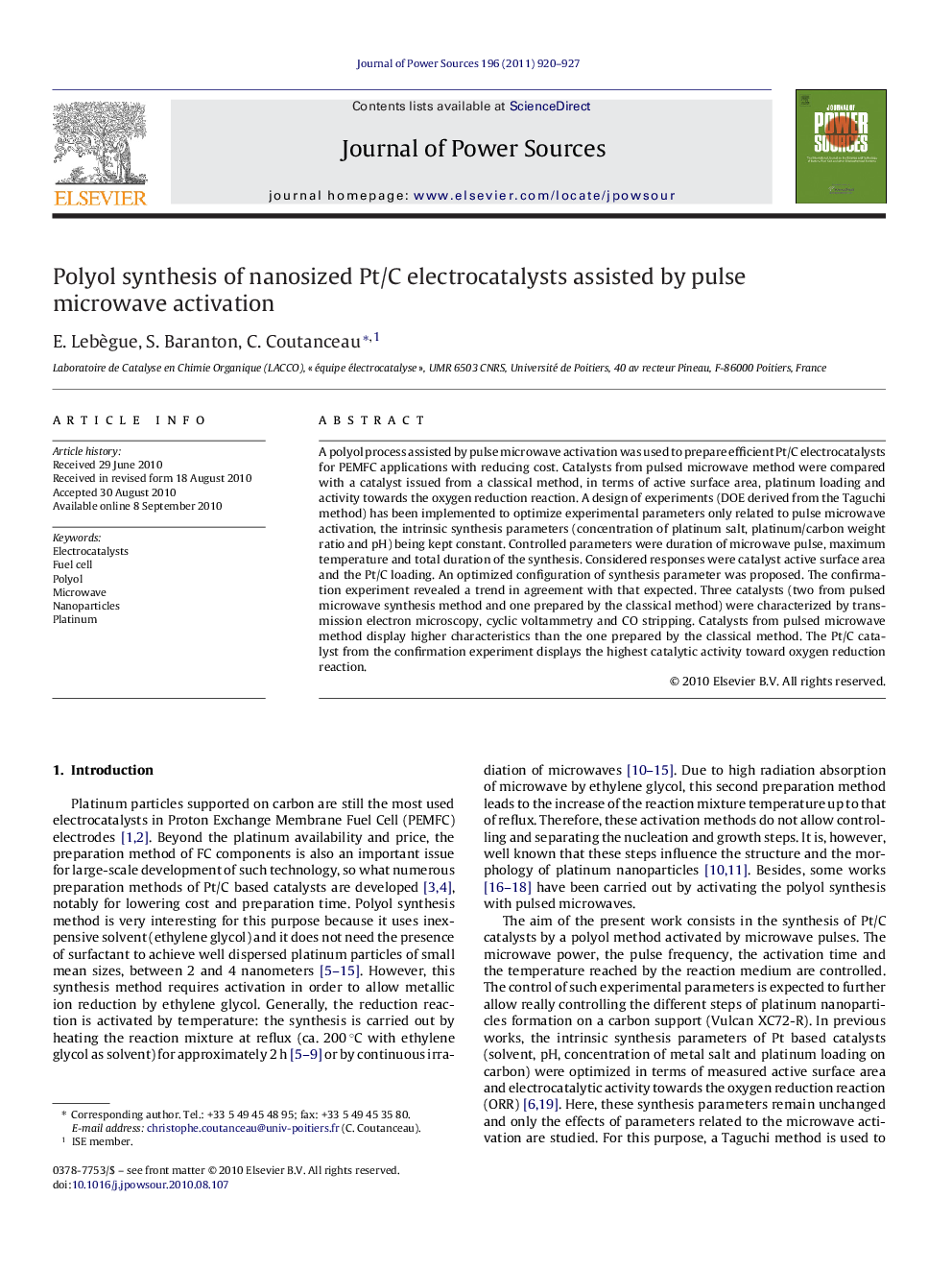| Article ID | Journal | Published Year | Pages | File Type |
|---|---|---|---|---|
| 1289571 | Journal of Power Sources | 2011 | 8 Pages |
A polyol process assisted by pulse microwave activation was used to prepare efficient Pt/C electrocatalysts for PEMFC applications with reducing cost. Catalysts from pulsed microwave method were compared with a catalyst issued from a classical method, in terms of active surface area, platinum loading and activity towards the oxygen reduction reaction. A design of experiments (DOE derived from the Taguchi method) has been implemented to optimize experimental parameters only related to pulse microwave activation, the intrinsic synthesis parameters (concentration of platinum salt, platinum/carbon weight ratio and pH) being kept constant. Controlled parameters were duration of microwave pulse, maximum temperature and total duration of the synthesis. Considered responses were catalyst active surface area and the Pt/C loading. An optimized configuration of synthesis parameter was proposed. The confirmation experiment revealed a trend in agreement with that expected. Three catalysts (two from pulsed microwave synthesis method and one prepared by the classical method) were characterized by transmission electron microscopy, cyclic voltammetry and CO stripping. Catalysts from pulsed microwave method display higher characteristics than the one prepared by the classical method. The Pt/C catalyst from the confirmation experiment displays the highest catalytic activity toward oxygen reduction reaction.
